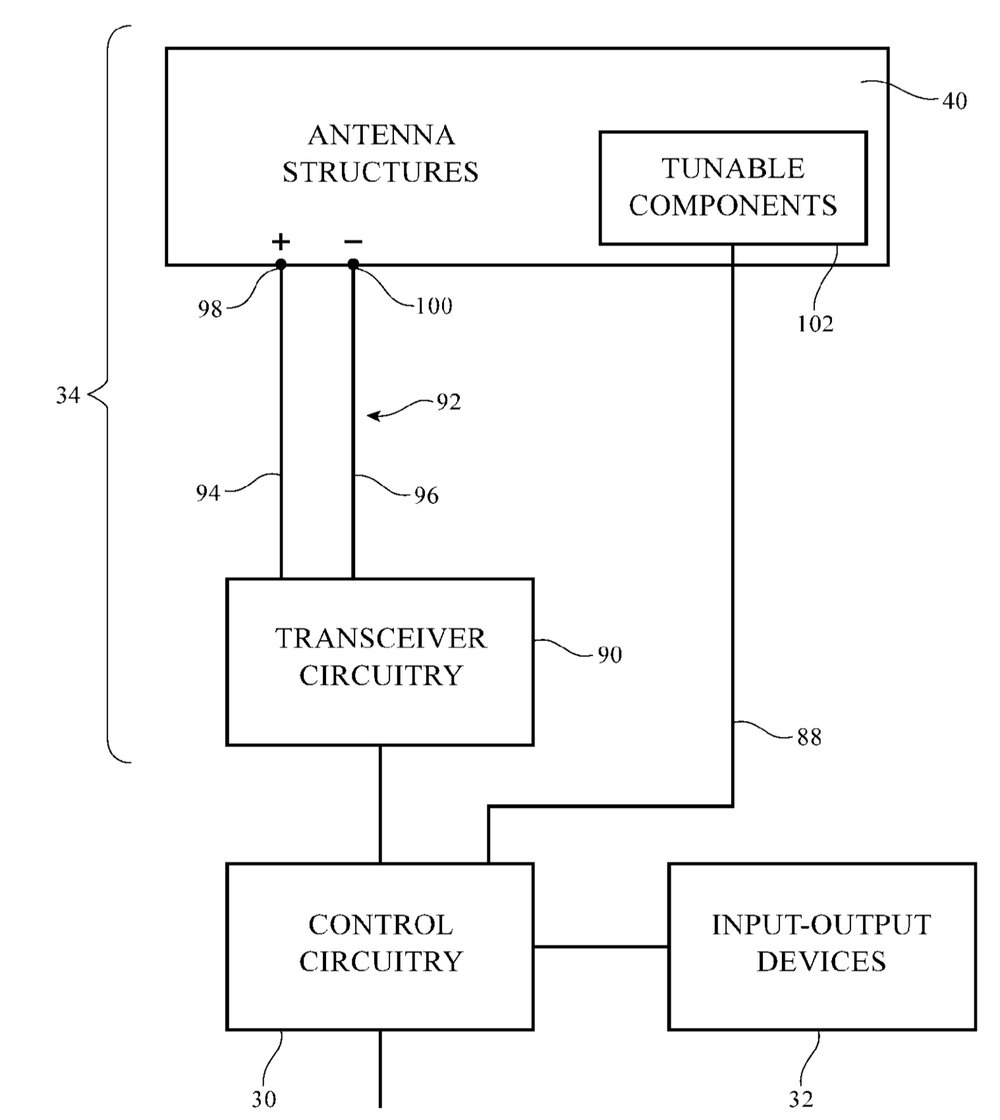Apple has applied for a patent (number 20170302326) for an “electronic device having antenna tuning integrated circuits with sensors.” It would allow 5G network implementation in future iPhones and iPads.
The patent involves millimeter wave antenna. Millimeter wave, which is also known as extremely high frequency (EHF) or very high frequency (VHF) by the International Telecommunications Union (ITU), can be used for high-speed wireless broadband communications. Millimeter wave is an undeveloped band of spectrum that can be used in a broad range of products and services like high speed, point-to-point wireless local area networks (WLANs) and broadband access. In telecommunications, millimeter wave is used for a variety of services on mobile and wireless networks, as it allows for higher data rates up to 10 Gbps.

Millimeter wave is being considered by standards organization, the Federal Communications Commission (FCC) and researchers as the way to bring 5G into the future by allocating more bandwidth to deliver faster, higher-quality video, and multimedia content and services. The 5G technology standard is under development as the Internet of Things and an increasing number of mobile users create demand for next-generation wireless infrastructure.
In the patent filing, Apple notes that it can be challenging to form electronic device antenna structures with desired attributes. In some wireless devices, the presence of conductive structures can influence antenna performance. For example, the presence of conductive housing structures or other device structures may limit the volume available for implementing antennas.
This can adversely affect antenna bandwidth. Antenna tuning techniques may be used to compensate for limited antenna bandwidth, but unless a tunable antenna is operated appropriately, antenna performance may be degraded due to nonlinearities and detuning effects. Apple says that it would “therefore be desirable to be able to provide improved wireless circuitry for electronic devices such as improved antenna circuitry.”
Here’s Apple’s summary of the invention: “An electronic device may be provided with wireless circuitry. The wireless circuitry may include one or more antennas. An antenna may have an antenna feed that is coupled to a radio-frequency transceiver with a transmission line. An impedance matching circuit may be coupled to the antenna feed to match the impedance of the transmission line and the antenna. The impedance matching circuit and tunable circuitry in the antenna may be formed using integrated circuits. Each integrated circuit may include switching circuitry that is used in switching components such as inductors and capacitors into use.
“Sensors such as temperature sensors, current and voltage sensors, power sensors, and impedance sensors may be integrated into the integrated circuits. Each integrated circuit may store settings for the switching circuitry and may include communications and control circuitry for communicating with external circuits and processing sensor data.”
Of course, Apple files for — and is granted — lots of patents by the U.S. Patent & Trademark Office. Many are for inventions that never see the light of day. However, you never can tell which ones will materialize in a real product.
